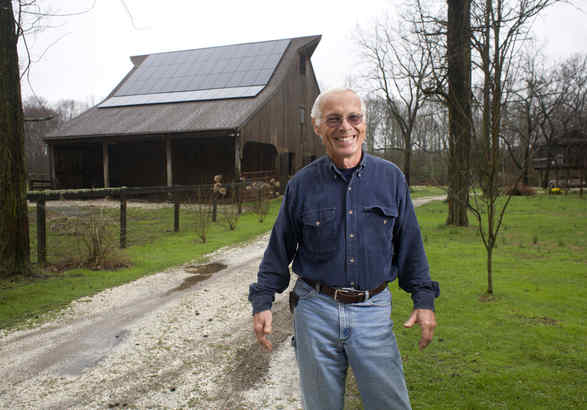
Here's an interesting article about converting agricultural land to solar power production. The area in question is a beautiful rural area in South Jersey, about twenty miles south of Philadelphia. A farmer wants to take 512 acres of orchard land and built the biggest solar power farm in New Jersey.
From the fields that Ed Stella Jr. owns in Upper Pittsgrove, Salem County, "miles and miles and miles of farmland" stretch in every direction. Stella wants to take 512 acres out of production to erect 80 megawatts of solar panels. The change, he said, would be "like a grain of pepper in the saltshaker."
The debate raises questions about how to balance two goals: to preserve New Jersey's agricultural economy, and to increase its role as a leader in solar energy.
I tend to be against replacing arable land with a power plant. Aesthetics aside, it reminds of me of what happened when midwestern farmers were encouraged to sell crops to be used for bio-fuels rather than food production -- it had an adverse effect on food supply. I'd prefer that non-arable land be used to set up a solar farm.
On the other hand, farmland in our area is disappearing at an alarming rate -- as development and sprawl radiates outward from the city. That includes my house, which was built in 1993 on land that had been used for agriculture (so yeah, I'm being hypocritical).
If the plan is approved, Stella has said he would put a deed restriction on the property so that, if the panels were removed, the land would go back to farming.
If not, the company has said, the alternative could be 150 houses, 627 miles of roads, and 188 children in the school system.
"I'd rather see this [solar project] than housing developments front and back," Doug Nichols, 60, whose home on Route 77 is sandwiched by Stella's property, said at an informational meeting this month.
If this farmland is going to be developed anyway, I wouldn't object to projects like solar farms being mixed in.Read the entire Article Here

No comments:
Post a Comment